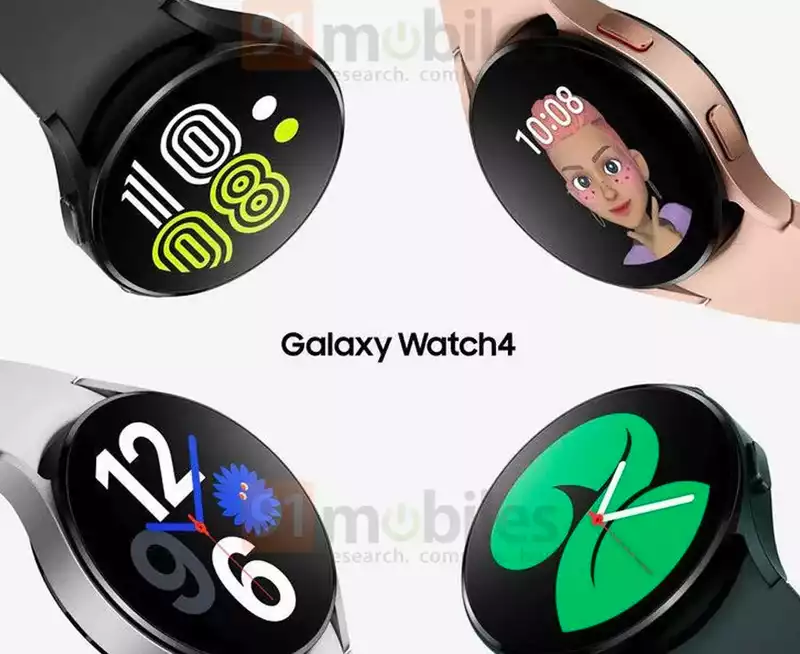The Samsung Galaxy Watch 4 may feature health sensors that could change the way we understand our bodies, if Samsung's premature Amazon listing for its next smartwatch includes accurate specs.
The "Special Features" section of the deleted Galaxy Watch 4's online product page includes several familiar perks, including sleep tracking, blood oxygen (SpO2) measurement, and heart rate monitoring. However, the smartwatch could cost around $275, if the listed price translates accurately. Such features have been rumored for the past few weeks.
Samsung is apparently waiting until the Unpacked event, which is confirmed to take place on August 11, to reveal how the Galaxy Watch 4's body composition analysis will work. However, with Amazon's listing clearly confirming that it is coming, we can take some guesses as to the health data it will provide. We can also begin to address the potential concerns associated with it.
Bioelectrical impedance analysis (BIA) uses a weak electric current to measure body composition. On the best smart scales, body composition data includes body fat percentage, body mass index (BMI), muscle mass, bone mass, and body water percentage.
According to a Scientific Reports article published earlier this year, scale-based and wrist-based BIA measurements differ in that the former is better at estimating subcutaneous fat (under the skin), while the latter can better estimate visceral and abdominal fat.
For wrist-based body composition analysis to work, smartwatches need "some sort of bioimpedance analysis system," says Dr. Steven Heimsfield, Professor and Director of the Body Composition and Metabolism Laboratory at the Pennington Biomedical Research Center.
"Prototypes like this appeared in various forms many years ago," Dr. Heymsfield said, confirming that such a tool is possible on a smartwatch.
The journal Scientific Reports also highlighted how wrist-worn BIA sensors can cause accuracy problems. The researchers found that the electrodes needed to measure things like body fat percentage "can be adapted into smaller devices."
Samsung has even patented just such an adaptation; Patently Apple noted it in 2019, revealing a "wrist wearable body composition monitor" that requires one or two fingers pressed against a sensor.
In the diagram, the sensor appears to be above or below the device's strap; since the Galaxy Watch 4's band is expected to be interchangeable, Samsung may have adjusted its approach. The sensor is likely built into the bottom of the actual watch, but the user may need to hold a finger over the side of the casing or against the crown button to initiate a scan.
Still, Dr. Heymsfield said, "We would need to check the accuracy against a reference method."
Dr. Heymsfield pointed out why people who manage their weight responsibly would want to understand changes in their body composition.
"How much is fat and how much is muscle?" People are interested in these kinds of questions."
But again, accuracy is a concern here. And not just for the reliability of the Galaxy Watch 4, but for people monitoring their health goals: in my review of Amazon Halo, I wrote that unbridled access to body fat percent measurements can perpetuate body disfigurement and disability, especially if the measurement is high or low enough to see how you expressed hesitation about when one can see how one looks.
Even without visualization, erroneous numbers can similarly distort one's understanding of one's body. According to the Anxiety and Depression Association of America, approximately 1 in 50 people in the United States suffer from body dysmorphic disorder, and ANAD reports that at least 9% of people worldwide suffer from eating disorders.
This is a sizable population of people who, if not properly directed, could be disadvantaged by smartwatches that read body composition.
Measuring body fat at home is extraordinary health tech, but the disclaimer is more than necessary. Fortunately, only users over the age of 18 can use the Halo band's body scan feature. I would not be surprised if Samsung takes the lead and imposes an age requirement for body composition analysis.
Despite the healthy irony, the addition of body composition analysis could turn an already popular smartwatch into an indispensable health tool; the Apple Watch 7 doesn't seem destined to feature the new wellness sensor, and the Galaxy Watch 4 is a step ahead of the best smartwatch one step ahead of the Galaxy Watch 4's reign as the best smartwatch.
All eyes will be on Samsung when it unveils the successor to the Galaxy Watch Active 2. We hope the company is prepared to address concerns about body composition analysis and show how this feature will be responsibly implemented.
.









Comments